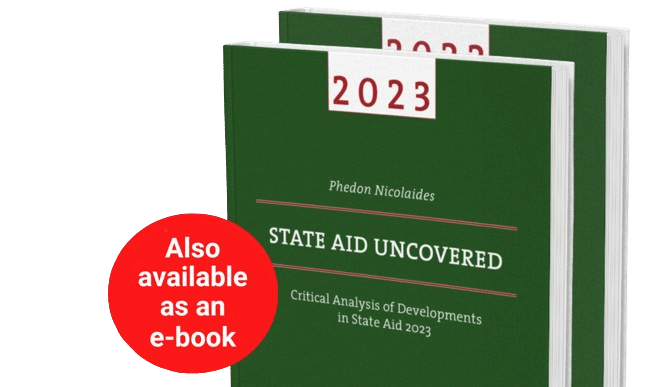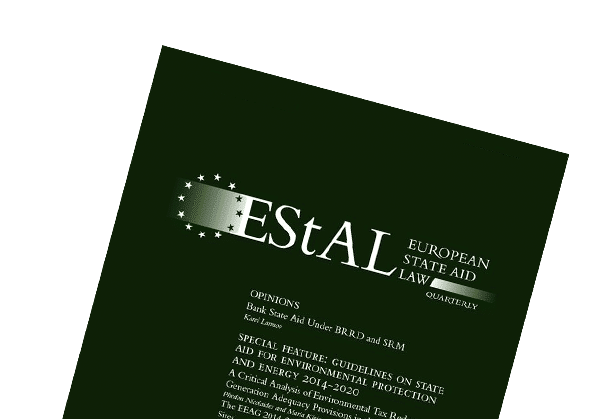
Introduction
Last week I reviewed the main provisions of the new Guidelines on State Aid to Airports and Airlines. This week I focus on three issues which are either not well explained or too ambiguous, leaving too much room for creative interpretation. [1]
Investment funding gap
The new Guidelines, like the other new rules, stress that aid must have an incentive effect and be proportional. For both investment and operating aid to airports, the incentive effect can be demonstrated in two ways: either on the basis of a counterfactual scenario that shows what would happen without the aid, or by demonstrating a “funding gap”. A funding gap is the difference between the discounted costs [investment and operating] and the revenue. The existence of funding gap means losses over the life of the airport. Without State aid, the airport cannot survive commercially. Aid is, therefore, necessary, but it is proportional only when it does not exceed the funding gap.
To calculate the funding gap, future streams of income and expenses have to be discounted. The rate of discount is the cost of capital of the airport. This means that if investors in an airport expect, say, a 15% return, then future costs and revenues from the operation of the airport must be discounted at 15%, irrespective of the reference rate for the country in question. Although not mentioned by the Guidelines, the funding gap method is borrowed from the methodology of using EU Structural Funds to support infrastructural projects.
The Guidelines stipulate that “the maximum allowed amount of State aid is expressed as a percentage (%) of eligible costs (the maximum aid intensity)” [paragraph 97]. The maximum permissible aid intensity ranges between 25% and 75% of the eligible costs. Then the Guidelines specify that “investment aid to airports must be limited to the extra costs (net of extra revenues)”, that “the amount of the aid should not exceed the funding gap of the investment project” and that “the aid intensity must not exceed the maximum permissible investment aid intensity and should, in any case, not go beyond the actual funding gap of the investment project” [paragraphs 99 and 100].
We have three tests of proportionality:
a) Aid intensity not exceeding a percentage of investment costs;
b) Aid amount not exceeding the funding gap;
c) Aid intensity not exceeding the funding gap.
Perhaps what is meant is that State aid should be subject to multiple constraints: a constraint imposed by eligible costs and another imposed by the funding gap. This in itself is not unusual, but what is paradoxical is the combination of these constraints.
Do you know we also publish a journal on State aid?

The European State Aid Law Quarterly is available online and in print, and our subscribers benefit from a reduced price for our events.
As alluded above, the necessity of the aid is shown by the existence of the funding gap. No private investor would want to make an investment with a funding gap, as he would suffer losses. Since aid is proportional when it represents the minimum necessary for a project to be undertaken, it follows that aid must cover the whole of the funding gap [for the project to materialise] but no more. If the aid is less than the funding gap, the project will not be undertaken.
But this is not the end of the story. Since, with the aid ceilings mentioned above, the aid may not be enough to cover the whole of the funding gap, the Guidelines implicitly presume that airport operators have other sources of income which are not linked to the aided investment. This is indeed correct: operators generate revenue from shops, parking, transport, etc. But if there are other sources of income, it is very puzzling that they are not explicitly taken into account. Perhaps one may say that airports are not built for the purpose of generating income from parking or shopping. But if today’s public expects travel to be packaged with other services, and if airport managers do take these expectations into account, then public authorities and the Commission should too. On the other hand, if such income should be excluded, then the Guidelines should impose strict account separation and allow public funding to cover the whole of the funding gap. Member States would then be able to pursue pure public policy objectives with the funding of airport infrastructure and any ancillary activities such as shopping, which in the eyes of the Commission or Member States are not necessary, would have to be completely self-financing.
Operating funding gap
The Guidelines also allow operating aid to cover a shortfall in the revenue of airports. Such operating aid has an incentive effect when in its absence, and after taking into account investment aid, the airport could not cover the costs of the services it provides and therefore would have to cut them back or would not be able to operate at all.
In order to ensure that the principle of proportionality is satisfied, the Guidelines stipulate that operating aid must not exceed 50% of the annual “operating funding gap” over a ten-year period. The operating funding gap is the difference between costs and revenue.
The same comments as for the investment funding gap apply here too. The existence of a funding gap, regardless of whether it is operational or investment, implies that a rational investor would not undertake the project. If aid is allowed only for up to half of this gap, then the airport operator would have to cover the rest with income from other sources. But again, if the Guidelines implicitly assume the existence of such alternative sources of income, why do they not explicitly require that they are taken into account and that aid is used to fill any shortfall after all costs and all income of the airport are summed up?
Incremental costs
Airport charges on airlines must cover at least the incremental costs incurred by the airport in order to provide services to airlines. The incremental costs are all the costs borne by the airport as a result of the presence of an airline [paragraph 64]. This is to prevent subsidised infrastructure from benefitting airlines.
But the Guidelines also permit Member States to grant explicit aid to airlines to induce them to start-up new routes. Start-up aid is limited to no more than 50% of the airport charges, which are the eligible costs for this kind of aid, for a maximum period of three years.
Three comments need to be made in this connection. First, incremental costs may be too low for the purpose of preventing airlines benefitting from subsidised infrastructures. The Guidelines acknowledge that “between 70% and 90% of the airport’s costs are fixed” [footnote 82] and that “the need for public funding to finance operating costs will, due to high fixed costs, vary according to the size of an airport” [paragraph 118]. These statements imply that variable costs are two low in relation to the total costs of an airport. So, irrespective of whether airports give explicit aid for the start-up of new routes or not, airlines which bear only incremental costs are bound to benefit from State aid to airport construction. Despite the rhetoric of the Guidelines that travellers should eventually pay prices that reflect the true costs of running airports, in reality it will be taxpayers to bear the bulk of those costs.
Second, as explained in paragraph 64 of the Guidelines, the airport charges that are to be paid by airlines can take into account not only the costs caused by airlines [and borne by airports], but also the revenue that airlines generate. For example, if an airline causes incremental costs (C) of 10 and extra revenue (R) of 8, the charge (F) it pays can be only 2 [= F = C – R = 10 – 8]. In other words, the Guidelines allow charges or fees that can be lower than incremental costs. For an airport with subsidised infrastructure this calculation makes commercial sense [that is why under the Guidelines it satisfies the MEOT]. But it is questionable whether it also makes sense from a public policy perspective. There is no reason why airlines and passengers should not also pay at least part of the fixed costs of airports which have been funded from the public purse. In fact, charging prices that cover only variable costs is exactly how the market would behave in the absence of any public policy. But the Guidelines, like all State aid rules, also intend to bring about a certain degree of coordination so as to level the playing field across Member States and prevent distortions of competition caused by subsidies to infrastructure. It is also questionable whether start-up aid should be allowed at all, given that by taking into account revenue generated by airlines, airport charges are likely to be below incremental costs.
Third, it is not easy at any rate to determine what are the incremental costs induced by an airline. It is relatively straightforward to identify the variable costs of an airport [personnel, energy, supplies, etc.], but not those that can be attributed to the activity of any single airline, with the exception of fuel and other supplies consumed directly by the airline. This is because personnel and equipment are on standby to serve all airlines that may use a particular airport. It would have been clearer, easier and more appropriate to derive charges that reflect true costs had the Guidelines stipulated that charges covered an appropriate proportion of the variable costs of an airport which were caused by the sum of activities of all airlines.
In conclusion, the new Guidelines on airports and airlines have much improved in relation to the previous ones. However, in some respects they may still be too permissive and allow too much State aid.
[1] I am grateful to Mihalis Kekelekis and Peter Staviczky for comments on a previous draft.


